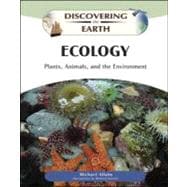
| Preface | p. ix |
| Acknowledgments | p. xi |
| Introduction | p. xii |
| Gilbiert White and His Letters to Naturalists | p. 1 |
| The Natural History and Antiquities of Selborne | p. 2 |
| Gilbert White, Naturalist of Selborne | p. 3 |
| Controlling Pests to Improve Crop Yields | p. 7 |
| The Beginning of Conservation | p. 12 |
| Renewable Resources in Medieval Forests | p. 15 |
| John Evelyn and Forestry | p. 19 |
| George Perkins Marsh and the Consequences of Deforestation | p. 23 |
| National Parks and Wildlife Reserves | p. 27 |
| Henry David Thoreau and Walden | p. 31 |
| Aldo Leopold and Preserving Wilderness | p. 34 |
| The Meaning of the Dust Bowl | p. 36 |
| Public or Private? "The Tragedy of the Commons" | p. 40 |
| The Chain of Being | p. 44 |
| John Ray and the Classification of Plants | p. 45 |
| Adaptation and the Great Chain of Being | p. 48 |
| Charles Bonnet (1720-1793), and the Discovery of Parthenogenesis | p. 50 |
| William Derham and the Interdependence of Organisms | p. 52 |
| Linnaeus and Binomial Nomenclature | p. 54 |
| René-Antoine Ferchault de Réaumur (2683-1757), and Experiments with Nature | p. 55 |
| What Is a Species? | p. 61 |
| Geography of Living Things | p. 65 |
| Eden, Noah, and Migration | p. 66 |
| Johann Forster, Georg Forster, James Cook, and Voyages of Biological Exploration | p. 69 |
| The Comte de Buffon and Geographic Isolation | p. 74 |
| Karl Willdenow and Plant Distribution | p. 78 |
| Alexander von Humboldt and Aimé Bonpland, Exploring South America | p. 79 |
| Charles Darwin and his "Entangled Bank" | p. 85 |
| Darwin and the Beagle | p. 86 |
| Evolution by Means of Natural Selection | p. 90 |
| Population and Resources | p. 96 |
| Thomas Malthus and An Essay on the Principle of Population | p. 98 |
| Ernst Haeckel and "Oecology," the Study of the Household | p. 101 |
| How "Oecology" Became "Ecology" | p. 104 |
| Vladimir Vernadsky and the Discovery of the Biosphere | p. 106 |
| James Lovelock and the Physiology of the Earth | p. 108 |
| Gaia Hypothesis | p. 110 |
| G. F. Gause and the Struggle for Existence | p. 112 |
| The Growth of Ecology | p. 115 |
| Abandoning the "Balance of Nature" | p. 116 |
| Karl Möbius, His Oysters, and the Biocoenosis | p. 118 |
| Stephen Forbes and "The Lake as a Microcosm" | p. 120 |
| François-Alphonse Forel and the Inhabitants of Lac Léman | p. 123 |
| Victor Hensen, Karl Brandt, and Studies of Sea Life | p. 126 |
| Social Organization of Plants | p. 131 |
| Oscar Drude and Plant Communities | p. 132 |
| Josias Braun-Blanquet and Phytosociology | p. 133 |
| The Zurich-Montpellier School | p. 135 |
| Eugenius Warming and the Ecology of Plants | p. 136 |
| American Ecology | p. 139 |
| Charles C. Adams and the Survey of Isle Royale | p. 140 |
| Henry Chandler Cowles and the Sand Dunes of Lake Michigan | p. 142 |
| Frederic E. Clements, Plant Succession, and the Superorganism | p. 146 |
| The Climax Concept | p. 149 |
| Henry Allan Gleason and the Individualistic Concept | p. 150 |
| Victor E. Shelford and Animal Communities | p. 152 |
| Robert H. MacArthur and the Testing of Hypotheses | p. 153 |
| Alfred J. Lotka, Vito Volterra, and the Mathematics of Relationships | p. 155 |
| Raymond Lindeman, Energy and Efficiency | p. 158 |
| The Odum Brothers and Systems Ecology | p. 160 |
| British Ecology | p. 165 |
| Arthur G. Tansley, Exploring British Plants | p. 166 |
| Charles Elton, Regulating Populations | p. 170 |
| Ecological Pyramids | p. 173 |
| Ronald Aylmer Fisher and the Union of Evolution and Ecology | p. 174 |
| Mendel's Laws | p. 175 |
| The Rise of Scoiobiology | p. 178 |
| William D. Hamilton and the Evolution of Behavior | p. 179 |
| Edward O. Wilson and Sociobiology | p. 183 |
| Ecology and Environmentalism | p. 186 |
| Rachel Carson and Silent Spring | p. 187 |
| The Rise of the Environmentalist Movement | p. 190 |
| The Stockholm Conference and the United Nations Environment Programme | p. 192 |
| Environmental Protection and Reducing Pollution | p. 196 |
| Conclusion | p. 199 |
| Glossary | p. 201 |
| Further Resources | p. 208 |
| Index | p. 214 |
| Table of Contents provided by Ingram. All Rights Reserved. |
The New copy of this book will include any supplemental materials advertised. Please check the title of the book to determine if it should include any access cards, study guides, lab manuals, CDs, etc.
The Used, Rental and eBook copies of this book are not guaranteed to include any supplemental materials. Typically, only the book itself is included. This is true even if the title states it includes any access cards, study guides, lab manuals, CDs, etc.
Excerpted from Ecology: Plants, Animals, and the Environment by Michael Allaby
All rights reserved by the original copyright owners. Excerpts are provided for display purposes only and may not be reproduced, reprinted or distributed without the written permission of the publisher.